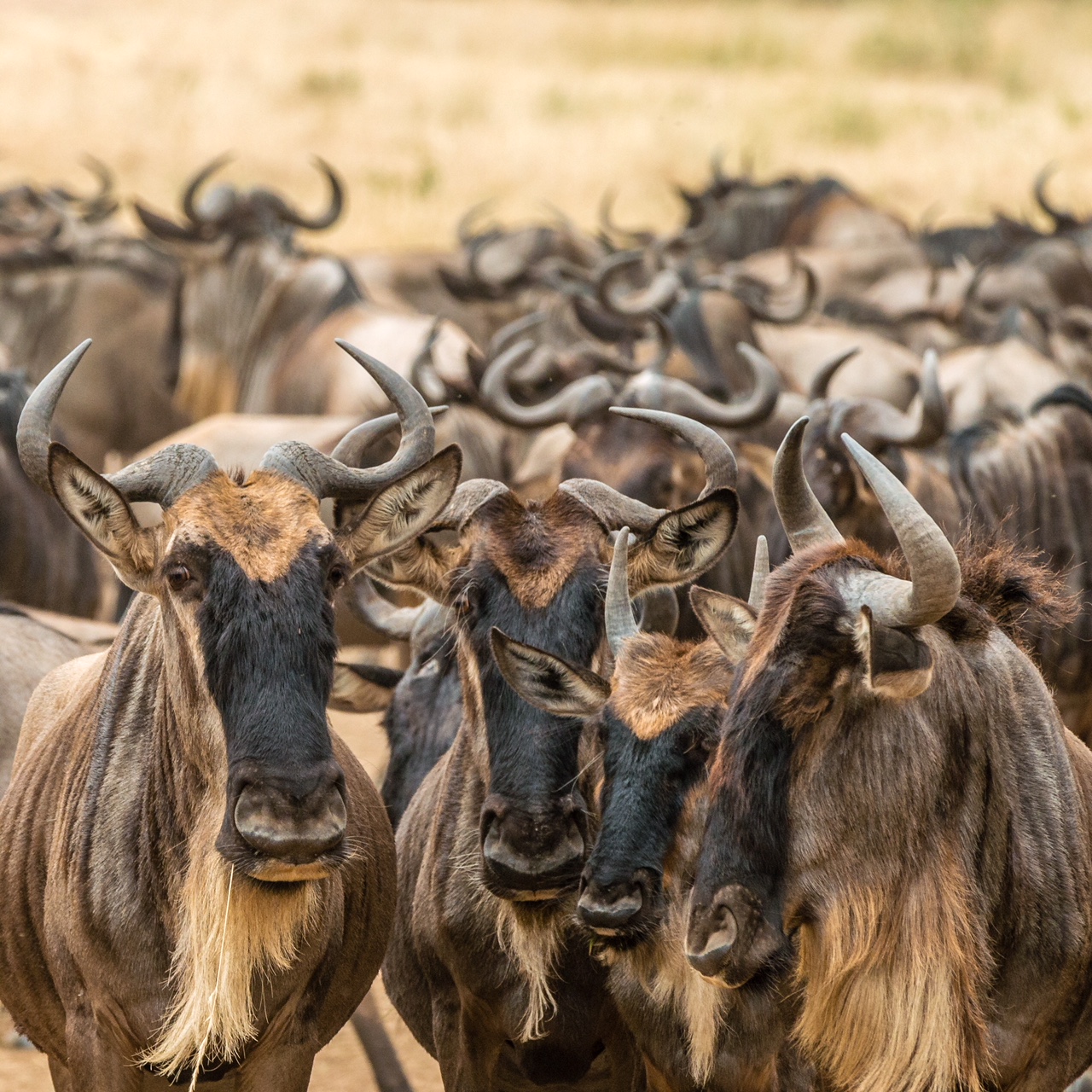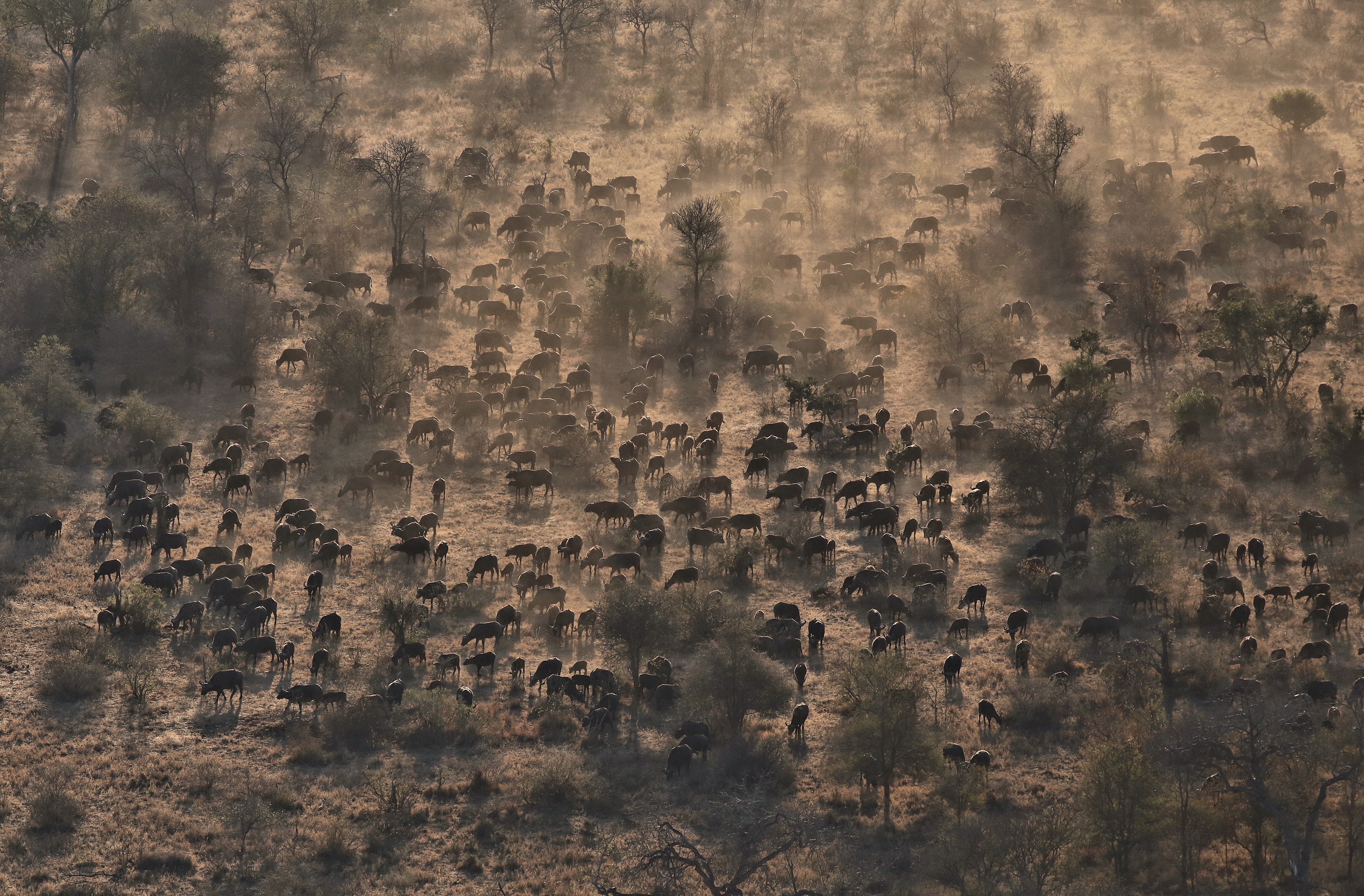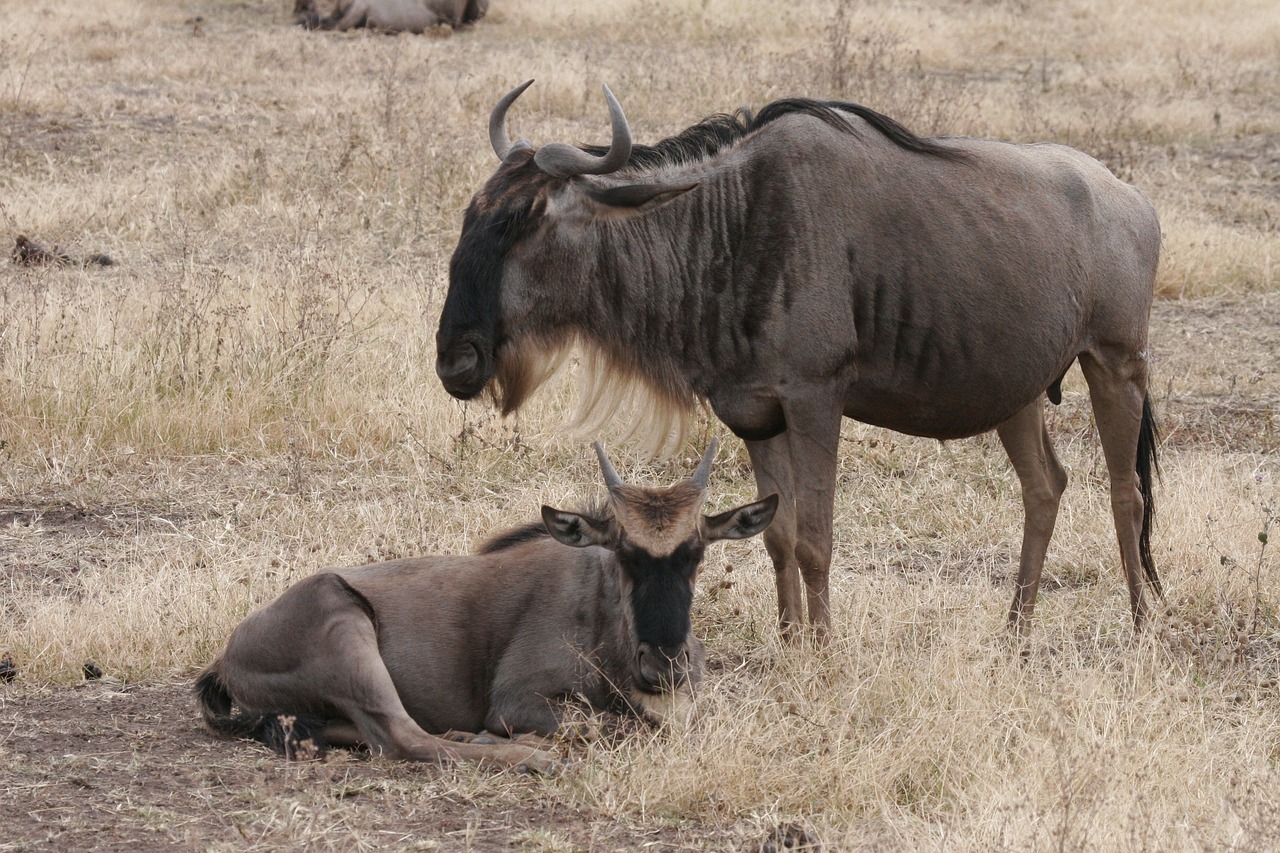All you need to know about the Great Wildebeest Migration
The Great Wildebeest Migration is without a doubt one of the planet’s most incredible wildlife spectacles. Each year around 1.8 million wildebeest and hundreds of thousands of zebra and gazelle migrate across the Serengeti ecosystemn in search of pastures green. By following the rains, the herds must battle raging rivers and avoid lurking predators in order to complete this annual endless cycle that occurs in a fairly regular pattern each year.
Did you know that the Great Migration is a year round spectacle and not just a one-time annual event.? It can be seen at any time of the year - you just need to know where to go!
Generally speaking, the best time to see the Great Migration in Tanzania is end-December to March (the migration birthing cycle) and July to October (the dry season).
Although nothing is certain in nature, below is a rough outline of the main stages of the wildebeest migration:
1. The Calving Season
2. The North Trek
3. River Crossings - Grumeti and Mara
4. The Arrival of the Herds in the Masai Mara
5. The Journey back South
THE GREAT MIGRATION CALENDAR
As the new year dawns, the majority of the wildebeest have started congregating on the Ndutu Plains in the South of Serengeti National Park. Some also spill over into the Ngorongoro Conservation Area, but this is the time when the herds are concentrated in their greatest numbers. As February begins, so does the birthing season. For a three-week period approximately 8,000 wildebeest calves are born every day giving rise to even more black dots on the endless plains. The abundance of ungulates, of course, attracts plenty of predators - from the lightning fast cheetahs to the sly hyena, it is a time of plenty for both prey and predator.
JANUARY:
The herds have reached the short grass plains of the Southern Serengeti around Lake Ndutu. The short rains usually fall here in November and December attracting herds in search of green pastures from Central Serengeti. Rich in phosphorus, the soil of the grasslands of the Southern Plains offers nutritious grazing.FEBRUARY:
This is the beginning of the calving season, with up to 500,000 wildebeest being born within a period of 2-4 weeks. This is the season when it’s easy for predators to find prey. A great time to visit, since there is a lot of action!MARCH:
The Southern Plains start to dry out from several weeks of intensive grazing. The herds gets confused and wander as far west into the Maswa Game Reserve woodland.
After the births of the wildebeest calves, slowly the herds start to split up. Although the general direction is North, splinter herds form and the wildebeest are in limbo. Some of the herds head straight towards the Grumeti area in the West, whilst many of the wildebeest travel into and around the Seronera (Central) region of the park. Even when split up, the herds still number in their thousands as they make their way through the center of the Serengeti. April and May brings the long rainy season to Tanzania, but this also provides an excellent chance of some brilliant game viewing at lower prices.
APRIL:
The plains have no sufficient food to sustain the herd. This is the beginning of the north-west trek towards the Western Corridor of the Serengeti where heavy rains set in. It is a slow movement through scattered woodlands and long grass plains.
MAY:
As the rains begin to dwindle, columns of wildebeest continue to enter the Western Corridor of the Serengeti. Others head north of the Seronera (Central) region, but the bulk of the migrating herds enters the Ndoha and Dutwa plains that flank the Mbalageti River. Towards the end of the month, there is a sense of expectation as the migration piles up in the narrow wedge of land between the forest lined river courses of the Mbalageti and Grumeti River. However, in years when the rains persists throughout May, the wildebeest may scatter over a wide area of Central Serengeti.
As May progresses into June, the herds are still in their splinter groups. Whilst some will head directly North from Seronera towards the Mara River, others arrive in the Grumeti region of the park. Here, the famous Grumeti River meanders through beautiful riverine woodlands. Although the Grumeti is certainly not on the same scale as the Mara River, there are some small river crossings that do occur and the Grumeti area is a beautiful place to explore.
JUNE:
The rains have stopped and the wildebeest rut is in full swing. The grasslands reverberate to the bellows and grunts of testosterone fueled males as they chase rivals and round up females. This creates chaotic movement and noise, as females try to maintain contact with their calves. Marching its way through the Western Corridor, the migration begins to organize into a 'mega herd' bunched up along the southern bank of the Grumeti River.All eyes, however, are on the main group of the migration amassing for the Grumeti River crossings. This can start early in the month. Herds are splashing through what is usually a series of pools and channels rather than a continuous flowing river. As the frequency of crossings intensifies during June, the Grumeti's large crocodiles enjoy the annual glut of wildebeest and zebra flesh.
From July through to early November, the Mara River is the best place to see the wildebeest migration. Located in the Kogatende region in the North of the Serengeti, the herds start arriving here from the end of June onwards and this is where the second largest congregation occurs. Contrary to popular belief, the river is not the border between Tanzania and Kenya, and only about a quarter of the wildebeest enter the Masai Mara. Most of the herds tend to stay in the Serengeti National Park, but cross over the river multiple times in search of the best grazing. The scenes that unfold here are worthy of any wildlife documentary…with huge crocodiles lurking in the shallows as well as lions and leopards waiting in ambush on the banks, the wildebeest really are against the odds. Thousands fall victim to the predators as well as the current, but many make it through the hardship and are rewarded with lush green grass on which to graze upon.
JULY:
With the Grumeti River in the wake, the wildebeest and zebra push to the Northern Serengeti. Herds spread out on a broad front that extends from the Grumeti Game Reserve and Ikorongo Game Controlled Area to the northern reaches of the Serengeti. Large herds can be found as far east as Lobo. When the Migration actually crosses into Kenya's Masai Mara depends, as ever, on the rainfall pattern and how long the northern Serengeti grasslands can sustain the herds. In some years it happens as early as mid-June; in others, it doesn’t happen until August or September.*It is a common misconception that the crossing of the Mara River marks the transition of the migration from Tanzania to Kenya. The river actually meanders through the north-west Serengeti before looping north into the western reaches of the Masai Mara, repeatedly throwing water obstacles in the path of the herds. This makes it easier to stake out likely crossing points on either side through July and August.
AUGUST:
The apex of the crossings. In a typical year, you can expect the Migration to have reached the Masai Mara by early August. River crossings often reach their frenzied climax this month as large herds take a leap of faith into the Mara River - much to the delight of the waiting crocodiles and lions. The riverbanks become crowded with vultures and marabou storks feeding on the corpses of drowned wildebeest clogging up the river. Elsewhere you can witness less macabre scenes of wildebeest and zebras filing through long, golden grasslands.SEPTEMBER:
The herds may still be scattered across the Northern Serengeti, either about to cross into the Masai Mara or content to remain in Tanzania, grazing the rolling plains. The focus of the Migration, however, is firmly in Kenya where the wildebeest edge slowly eastwards through the Masai Mara.OCTOBER:
The rains may start falling on the short grass plains of the Southern Serengeti and wildebeests need to be there when fresh green shoots have pushed to the surface. And so begins the long trek south, the Migration gradually spilling from the Masai Mara back into the north-east Serengeti and Loliondo Game Controlled Area.
After the adrenaline fuelled river crossings, the wildebeest start their journey South again. From the start of November onward, the wildebeest head back towards the Ndutu Plains, completing their annual cycle. Some of the herds splinter into the central regions again, some stray East and some head directly South. Again they are in limbo, but will all congregate on the Southern plains by the end of the year.
NOVEMBER:
The herds start moving southwards following the rains. By now, most, if not all, of the wildebeest and zebra will have left the Mara. They form long columns stretches from Lobo to the Central Seronera area of the Serengeti.
DECEMBER:
The herds reach the Southern Serengeti where fresh grass covers the short plains….and the migration begins its annual cycle all over again.










